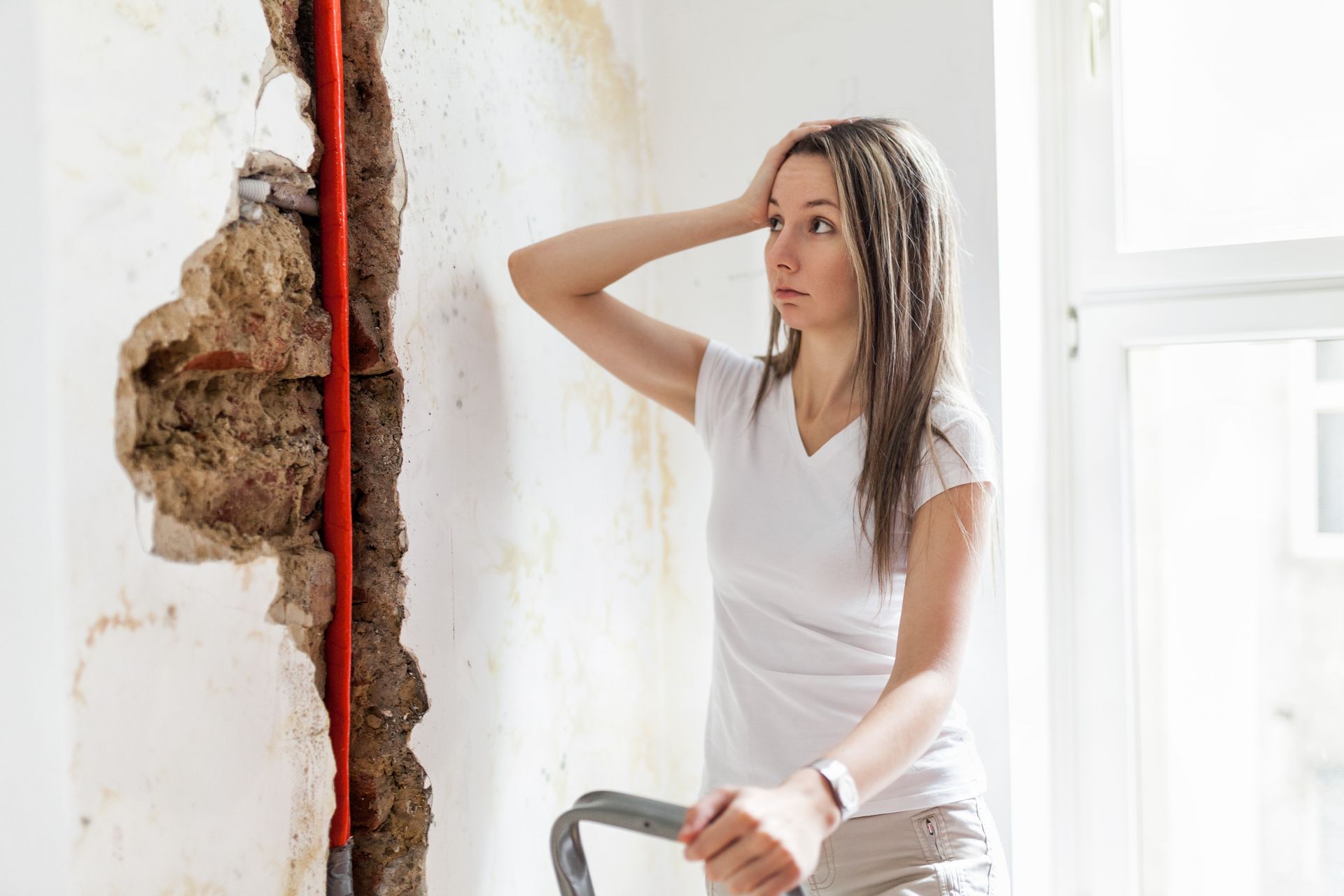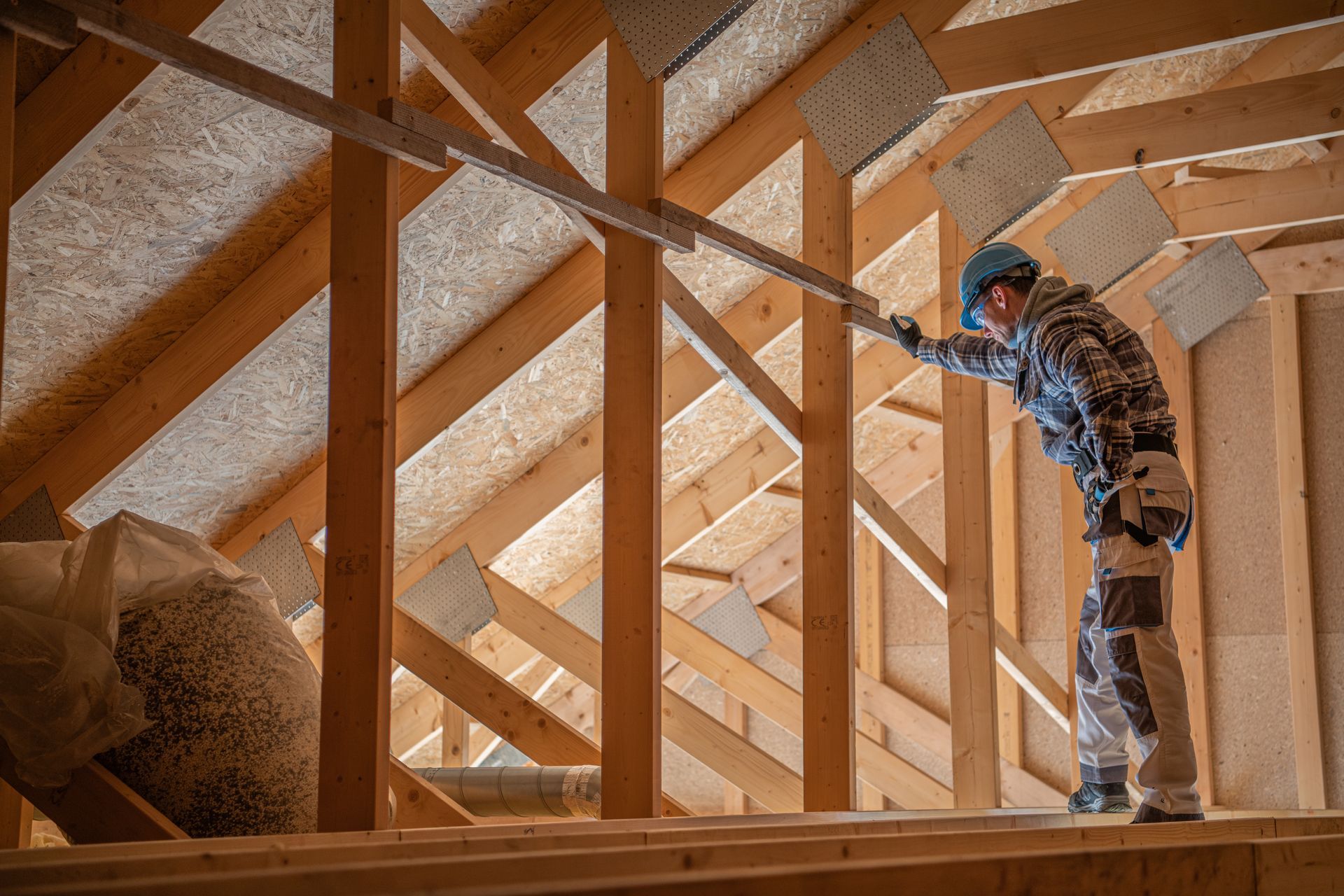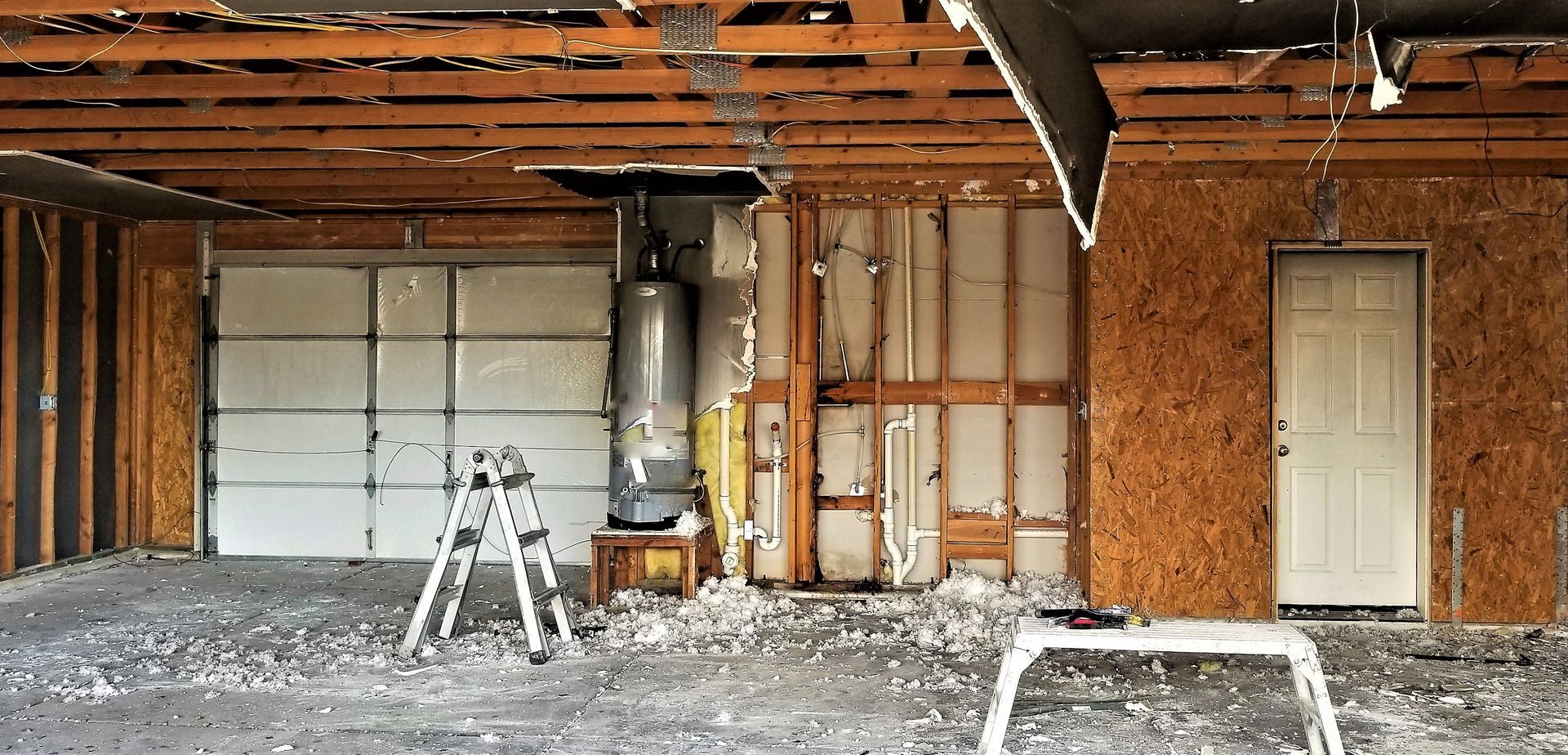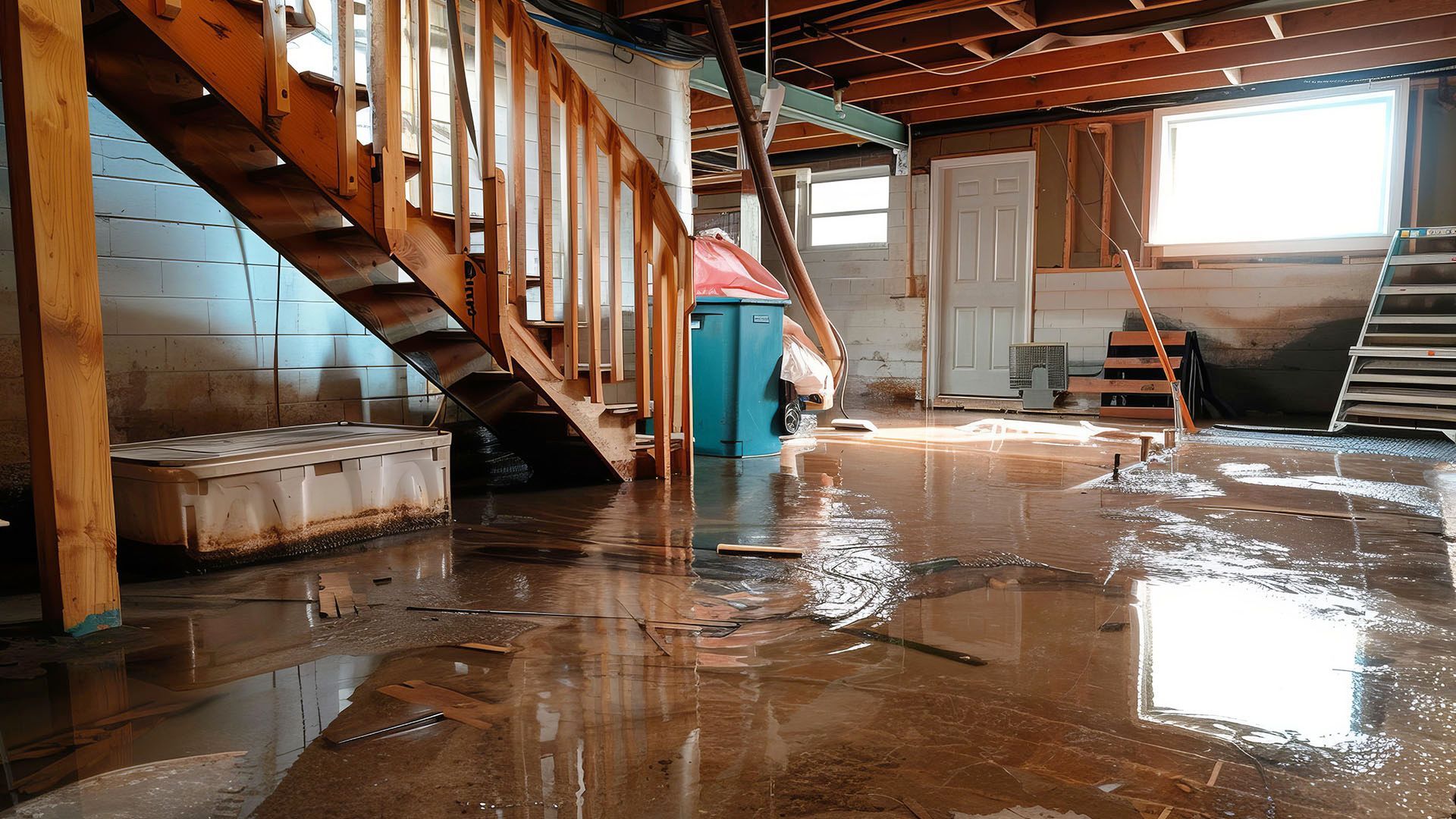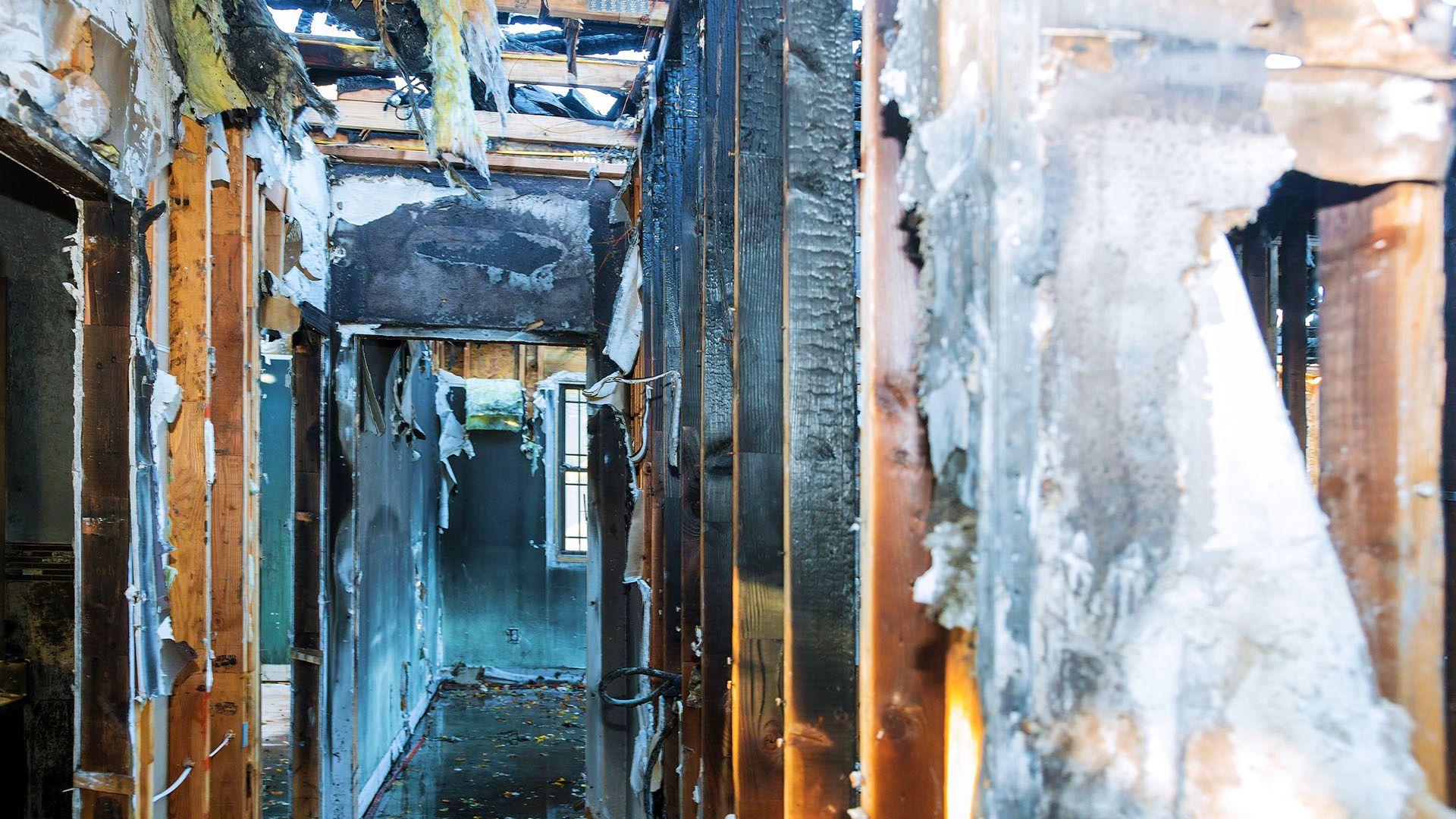How Much Does Mold Remediation Cost in CT? [2025 Guide]
Most Connecticut homeowners pay $1,200–$3,750 for professional mold remediation, or about $10–$25 per square foot. Small, contained jobs (like a bathroom wall) may be $500–$1,500. Large or whole-home projects with repairs can reach $10,000–$30,000+. Mold inspections typically cost $300–$1,000+ depending on home size and testing needs.
This article is written by Incredible Restorations, LLC, a licensed and insured restoration company serving Connecticut homes and businesses. Our technicians are IICRC-certified and handle mold, water, and indoor air quality issues every day. We use industry-standard methods, proper containment, HEPA filtration, source moisture control, and post-remediation verification. Our goal here isn’t to sell you something. It’s to explain real costs, what drives them, and how to spend wisely so you can make an informed decision.
Understanding Mold Remediation
What Is Mold Remediation?
Mold remediation is the process of finding, containing, removing, and preventing mold growth. It is different from quick "mold cleaning." True remediation focuses on the cause (usually moisture) and on safe removal of contaminated materials. A typical process includes:
- Inspection and moisture check – Locate visible growth and hidden moisture with meters or thermal imaging.
- Containment – Seal off the workspace with plastic and use negative air pressure so spores don’t spread.
- Air filtration – Run HEPA air scrubbers to capture airborne spores.
- Removal and cleaning – Remove porous materials that can’t be saved (like moldy drywall or insulation). Clean and treat salvageable surfaces (like framing or concrete).
- Drying and verification – Fix the water source, dry the structure, and verify the results visually and, if needed, with testing.
- Rebuild – Replace drywall, trim, insulation, paint, flooring, or other finishes after clearance.
Signs You Might Need Mold Remediation
You might not see mold right away. These signs suggest it’s time to check:
- Musty odor that doesn’t go away
- Spots or staining on drywall, trim, ceilings, baseboards, or joists
- Peeling paint or bubbling walls
- Condensation on windows or cold surfaces
- Allergy-like symptoms that improve when you leave home
- Recent leak or
water damage (roof, plumbing, appliance, basement seepage)
- Visible growth in bathrooms, basements, attics, or around HVAC vents
If any of these apply, act soon. Mold grows fast in the right conditions, and early action usually costs less.

Average Mold Remediation Costs in Connecticut
Typical Price Range for CT Homeowners
- Most jobs:
$1,200–$3,750
- Small/contained areas:
$500–$1,500
- Large/whole-home with rebuild:
$10,000–$30,000+
These ranges reflect typical CT market pricing in 2025. Your cost will depend on size, location, access, materials affected, moisture cause, and the amount of reconstruction needed after cleanup.
Mold Remediation Cost Per Square Foot
A helpful rule of thumb is $10–$25 per square foot for professional remediation. The low end usually applies to simple, accessible areas with light demolition. The high end reflects complex setups, like multiple rooms, high ceilings, tight access, heavy containment, or extensive cleaning of framing and contents. Extremely complex jobs, like full-attic insulation removal, crawlspace encapsulation, or HVAC contamination can go higher.
Quick example:
If 150 sq. ft. of basement drywall and baseboard are affected and accessible, expect something like
$1,500–$3,750 for containment, removal, HEPA filtration, cleaning, and treatments. Add
rebuild (drywall, paint, trim) afterward.
Factors That Influence Mold Remediation Costs
Severity and Type of Mold
- Severity matters more than the mold “species.” A light, surface-level growth is faster to address than a long-term issue with deep moisture and hidden cavities.
- Heavy colonization needs more containment, more labor, and sometimes multi-day HEPA filtration.
- Toxic or allergenic concerns may mean more careful handling, more phases of cleaning, and post-remediation testing, which adds cost.
Size of the Affected Area
The more square footage, the more containment plastic, negative air, labor hours, and disposal are needed. A small bathroom wall is very different from a basement with finished rooms, closets, and storage.
Location of the Mold (Basement, Attic, etc.)
Access and setup time change the budget:
- Basements may need dehumidification, slab or masonry cleaning, and flood cut drywall removal.
- Bathrooms often require tile removal, vanity detach, and careful work around plumbing.
- Attics are hot or cold, often cramped, and may require insulation removal plus ventilation fixes.
- HVAC systems and ductwork, if impacted, require specialized cleaning and sometimes coil treatment or duct replacement.
Type of Surface or Material Affected
- Porous materials (drywall, carpet, insulation, ceiling tiles) usually need removal and replacement.
- Semi-porous materials (wood framing, subfloor) can often be cleaned, treated, and sealed.
- Non-porous materials (metal, tile, glass) are usually cleanable.
More demolition and more finish work increases cost.
Testing and Inspection Costs
- Mold inspection or
independent testing typically ranges
$300–$1,000+.
- Some jobs don’t require lab testing if the growth is obvious and the moisture source is known; others benefit from
pre- and post- testing for documentation and peace of mind.
- Air samples and
surface swabs add to cost. Some homeowners also request
clearance testing by a third party after remediation.
Cost Breakdown by Area of the Home
Note: These are typical ranges for CT homes and assume professional containment, HEPA filtration, removal, cleaning, and treatments. The final price depends on exact scope and rebuild needs.
Basement Mold Remediation Costs
Typical: $2,500–$7,500+
Why costs vary:
- Basements can have multiple rooms and finishes.
- Water sources vary: seepage, sump failures, appliance leaks, or foundation cracks.
- Materials: Finished basements mean more drywall, trim, carpet, and built-ins to remove and later replace.
Cost drivers: - Flood cuts (e.g., 2 feet of drywall removal)
- Baseboard and insulation removal
- Cleaning of studs, masonry walls, and slab
- Dehumidification and moisture control planning
Money-saving tip: Fix drainage and humidity like downspouts, grading, or a dehumidifier so the problem doesn’t come back.
Money-saving tip: Fix drainage and humidity like downspouts, grading, or a dehumidifier so the problem doesn't come back. If you're planning to finish your basement after remediation, proper moisture control is essential.
Bathroom and Kitchen Mold Costs
Typical: $500–$1,500+ for small, contained areas; $1,500–$4,000+ if tile removal, vanity removal, or cabinet work is needed.
Why costs vary:
- Hidden leaks behind tile or under sinks add time.
- Tight spaces are easier to contain but harder to work in.
- If a shower or tub surround must be removed, expect higher demolition and rebuild costs.
Money-saving tip: Replace leaky valves and failing caulk early. Good ventilation (a vented fan that actually exhausts to the outside) keeps humidity down.
Money-saving tip: Replace leaky valves and failing caulk early. Good ventilation (a vented fan that actually exhausts to the outside) keeps humidity down. Consider professional bathroom remodeling to address moisture issues permanently.
Attic Mold Removal Pricing
Typical: $1,500–$5,000+; large or whole-attic projects can be $5,000–$12,000+ if insulation must be removed and replaced.
Why costs vary:
- Poor ventilation, inadequate air sealing, bathroom fans venting into the attic, or roof leaks are common causes.
- Work often includes air sealing, soffit/ridge vent improvements, and insulation replacement.
Money-saving tip: Ensure bath and kitchen fans vent outdoors, not into the attic. Add a continuous ridge vent and clear soffit vents to lower future risk.
Money-saving tip: Ensure bath and kitchen fans vent outdoors, not into the attic. Add a continuous ridge vent and clear soffit vents to lower future risk. Learn more about how attic mold happens and how to prevent it. If roof damage is contributing to the problem, our roofing services can help.
HVAC and Air Duct Mold Removal
Typical: $1,500–$5,000+, depending on system size, contamination, and number of registers.
Why costs vary:
- Ducts, coils, and air handlers take specialized cleaning.
- In some cases, duct replacement is cheaper than deep cleaning old, damaged, or fiber-lined ducts.
Money-saving tip: Address humidity and sources first. A clean system will get dirty again if moisture issues remain.
Additional Cost Considerations
Emergency or After-Hours Service Charges
If you need same-day or after-hours response for active leaks or ongoing water intrusion, expect a premium. The good news: fast response can reduce the total by stopping the spread and saving materials. Learn what to do after water damage occurs.
Reconstruction or Repairs After Remediation
Remediation often does not include rebuild. Budget for:
- Drywall replacement and finishing
- Trim and paint
- Flooring or carpet pad replacement
- Insulation replacement
- Cabinet or vanity reinstall
- Minor electrical or plumbing adjustments after walls are open
If the remediation company doesn't do rebuild, they may recommend trusted partners. Getting the rebuild scheduled quickly keeps your project on track. Our reconstruction services handle everything from demolition to finished spaces.
Preventative Treatments or Sealing
After surfaces are cleaned and dry, antimicrobial treatments and stain removers can help. On wood framing or sheathing, a sealant/encapsulant may be applied to lock in staining and provide a cleanable surface. These are usually modest add-ons that help reduce future risk, especially in basements and attics.
Is Mold Remediation Covered by Insurance in CT?
Sometimes. Home insurance usually covers mold only when it results from a sudden and accidental event that is covered by your policy, like a burst pipe or certain appliance failures. It often does not cover mold from long-term leaks, humidity, maintenance issues, or flooding (unless you have flood insurance).
What to check in your policy:
- Covered causes (perils) vs.
excluded causes
- Mold sub-limits (commonly a fixed dollar limit, like $5,000–$10,000)
- Endorsements (optional add-ons) for water backup or hidden water damage
- Deductible and whether multiple deductibles apply (e.g., water vs. wind)
- Required documentation and deadlines for claims
Tip: If you think it's covered, call your insurer right away and document photos, dates, and receipts. Ask if they want an independent mold assessment. A timely claim with good documentation tends to go smoother. If you need help with financing, we offer options to make remediation more affordable.
Tips to Reduce Mold Remediation Costs
- Fix moisture first. Tackle leaks, roof issues, grading, or ventilation right away. If water keeps coming in, cleanup costs climb.
- Act fast. The smaller the affected area, the less you’ll spend. Don’t wait weeks.
- Clear access. Move furniture and belongings so crews can set up containment quickly. Less time = lower labor cost.
- Ask about testing strategy. Not every job needs lab testing. Sometimes a visual inspection and moisture mapping are enough. When testing is needed, be clear on the scope (how many samples, which rooms, and who pays).
- Limit scope creep. Agree on what’s included: containment, demolition, HEPA air scrubbers, cleaning, treatments, disposal, and daily reporting.
- Bundle sensible repairs. For example, after attic remediation, bundle insulation replacement and ventilation improvements while the space is open.
- Control humidity year-round. Keep indoor RH
30–50%. Use bath fans, kitchen range hoods, and dehumidifiers where needed.
- Choose durable finishes. In basements, consider moisture-smart materials and vapor-aware assemblies to reduce future risk.
- Ask about warranties and maintenance. Some products or coatings include limited warranties; proper ventilation and moisture control help them last.
Why Hire a Professional Mold Remediation Company in CT?
Benefits of Certified Technicians
- Proper containment and safety. Prevents spores from spreading to clean areas.
- Right equipment. HEPA air scrubbers, negative air machines, moisture meters, and thermal imaging help do the job right.
- Industry standards. Certified pros follow recognized protocols for removal, cleaning, and verification.
- Documentation. You’ll have reports, photos, and invoices to share with realtors, insurers, or future buyers.
- Lower risk. DIY attempts often skip containment or moisture control, which can make problems worse.
Working With a Local, Licensed Company
- Faster response. Local teams get to you quickly, important when water is still active.
- CT-specific know-how. From older basements to attic ventilation in four-season weather, local experience matters.
- Networked trades. A local company can coordinate with roofers, plumbers, electricians, and rebuild contractors so you’re not left managing ten phone calls.
- Clear estimates. Expect line-item pricing so you can see what you’re paying for, containment, filtration, demolition, cleaning, treatments, and disposal.
Mold Remediation Cost Per Square Foot (Deep Dive)
While $10–$25 per sq. ft. is a good guide, here’s how that breaks down by conditions:
- $8–$12/sq. ft.: Small, simple projects with easy access; minimal demolition; straightforward cleaning and drying.
- $12–$18/sq. ft.: Moderate projects with limited demolition (e.g., flood cuts, insulation removal), basic structural cleaning, and post-cleaning treatments.
- $18–$25/sq. ft.: Complex areas, multiple rooms, heavy containment, multi-day air filtration, detailed cleaning of framing/subfloors/concrete, and tricky access (e.g., tight attics).
- $25+/sq. ft.: Specialty scopes, like
whole attic insulation removal and replacement,
crawlspace encapsulation,
HVAC contamination, or projects requiring
comprehensive testing and
multiple mobilizations.
Important: Square-foot pricing is a guide, not a fixed rule. Some costs (mobilization, equipment setup, negative air) are fixed regardless of size. That’s why very small projects sometimes seem “expensive per square foot,” while larger projects can have a lower per-square-foot cost once the setup is in place.
Cost Scenarios (Examples)
Scenario 1: Small Bathroom Wall (Shower Leak)
- Scope: Containment, remove 32 sq. ft. of drywall and baseboard, HEPA filtration, clean and treat studs, fix minor plumbing, no testing.
- Remediation:
$800–$1,600
- Rebuild:
$600–$1,200 (drywall, paint, trim)
- Total:
$1,400–$2,800
Scenario 2: Basement Corner (Seepage After Storm)
- Scope: Containment, 120 sq. ft. flood cuts, remove insulation and carpet pad, HEPA filtration, clean/treat studs and slab, dehumidification, basic testing after.
- Remediation:
$2,000–$4,500
- Rebuild:
$1,500–$3,000
- Total:
$3,500–$7,500
- Note: Add cost for drainage or foundation fixes separately. After storm damage, rapid response is critical.
Scenario 3: Attic With Widespread Sheathing Staining
- Scope: Containment at attic access, HEPA filtration, clean/treat sheathing and rafters, air sealing, ventilation upgrades, remove and replace insulation.
- Remediation (without insulation):
$2,000–$5,000
- Insulation remove/replace:
$2,000–$6,000+ (size-dependent)
- Total:
$4,000–$11,000+
Scenario 4: HVAC and Duct Contamination
- Scope: Clean air handler, coils, and ducts; treat registers; replace compromised flex duct runs; post-cleaning filtration.
- Remediation/Cleaning:
$1,500–$5,000+
- Replacement (if needed):
Varies widely by home size and duct length.
Mold Inspection Cost and When You Need It
- Basic inspection:
$300–$600 for a standard home, higher for large or complex properties.
- Testing:
$100–$200+ per sample (air or surface), often with 2–6 samples depending on size and goals.
- When to test:
- You need
documented baseline/clearance for insurance, a sale, or peace of mind.
- There are
health concerns and you want to compare indoor vs. outdoor spore counts.
- The mold is
suspected but not visible, and you want to confirm the source/extent.
- When testing may not be needed:
- Mold is
clearly visible and linked to a known, recent leak. The focus is on fixing the leak and removing damaged materials.
If you do test, consider using a third-party inspector for independence, and ask for a clear plan on how many samples, where, and why.
What a Good Mold Estimate Should Include
A clear, line-item estimate helps you compare bids fairly. Look for:
- Containment setup: Size, materials, and negative air equipment
- Air filtration: Number and size of HEPA scrubbers and how long they’ll run
- Demolition scope: What will be removed (drywall height, trim, insulation, carpet, cabinets)
- Cleaning/treatments: Which products, on which surfaces, and how many passes
- Disposal: Bagging, transport, and fees
- Moisture control: Drying plan, dehumidification, and source-fix notes
- Testing (if any): Who’s doing it, how many samples, and what the pass/fail criteria are
- Rebuild (if included): Materials, finishes, paint, and timeline
- Warranty: What is covered, for how long, and the conditions (e.g., must maintain humidity)
How to Choose the Right Contractor (Fast Checklist)
- Credentials: IICRC-certified technicians; CT license/registration; proper insurance.
- Experience: Ask about projects similar to yours (e.g., attics, basements, HVAC).
- Process: Clear steps for containment, HEPA, removal, treatment, and verification.
- Documentation: Photos and daily updates.
- Reviews and references: Check local feedback.
- Communication: Do they answer questions directly and explain line items?
- No scare tactics: A good pro educates rather than uses fear.
Have questions about mold in your CT home? Want a clear, line-item estimate from IICRC-certified technicians? Contact Incredible Restorations, LLC. We'll explain what's urgent, what's optional, and how to keep costs down without upselling. Call now or request an estimate online. We're here 24/7.

